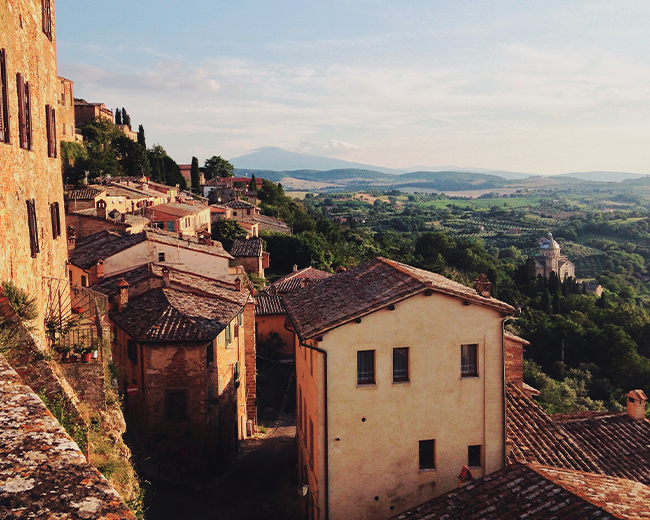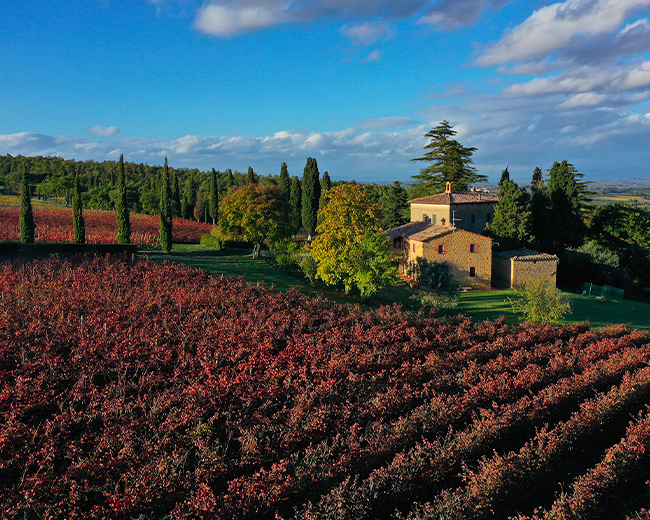We take you on a journey to discover the Val d’Orcia, a place of stunning landscapes and a veritable palette of colours.
5 Oct 2020
Gruppo UNA
Located to the southeast of Siena, the Val d’Orcia is traversed by the Orcia river. Hugged between the towns of Montalcino and Montepulciano, it lies close to the Tuscany/Umbria border. It is without doubt one of Tuscany’s most famous, oft-photographed areas thanks to its stunningly beautiful landscapes: medieval castles, sinuous hills, age-old villages, farmhouses, isolated country mansions, avenues of cypress trees, vineyards, olive groves and golden wheat fields.
A protected park, the entire area won UNESCO World Heritage Site status in 2004. Nature is the unchallenged star of the uncontaminated and beautiful Val d’Orcia, where the colours change with the seasons.
Pienza, Monticchiello and Castiglione D’Orcia.
We start our journey in Pienza, a small town in the province of Siena. Famous for being the city built by a Pope (Pius II), this town was renovated by architect Bernardo Rossellino and is a worthy World Heritage Site. Things not to miss are the Cathedral of the Assumption, which houses many priceless Renaissance paintings, and Palazzo Piccolomini, just to the right of the Cathedral. The Loggia overlooks a beautiful hanging garden where you can relax and take in the whole of the Val D’Orcia (to gauge its romantic potential, scenes for “Romeo and Juliet” were filmed here).
If you want to get lost in a traditional Tuscan village, head to Monticchiello, Pienza’s only outlying hamlet. Fully immersed in the Sienese hills, it sits 500 metres above sea level, hence its sensational panoramic views.
Astride a ridge just off the Cassia Way is Castiglione d’Orcia, a small, mainly agricultural town that also specializes in crafts. Small towns Ripa, Campiglia and Vivo d’Orcia all have churches and splendid palaces well worth a visit, including the truly ancient Camaldolese Hermitage at Contea, the oldest part of which was built before the year one thousand, and is today visible in majestic sixteenth-century form. Vivo d’Orcia boasts a forest of local pines at the foot of the Hermitage, the Abetina del Vivo. If you are walking to the Hermitage, you cross a charming, small valley with a delightful “Lovers’ Bridge”. Not far from here, immersed in a chestnut grove is the Romanesque Ermicciolo Church.
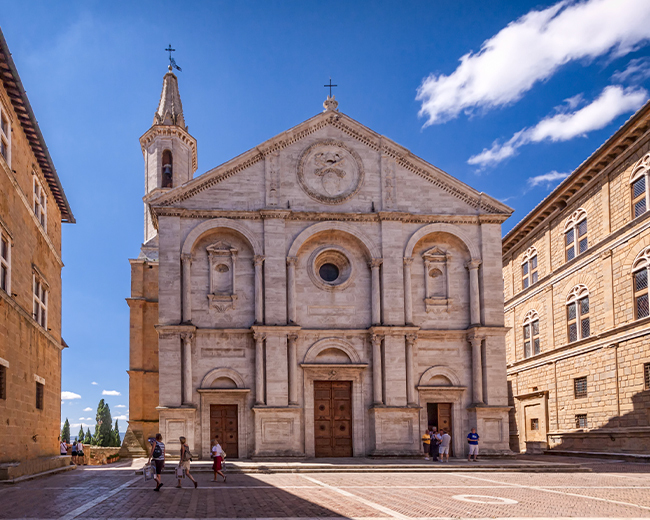
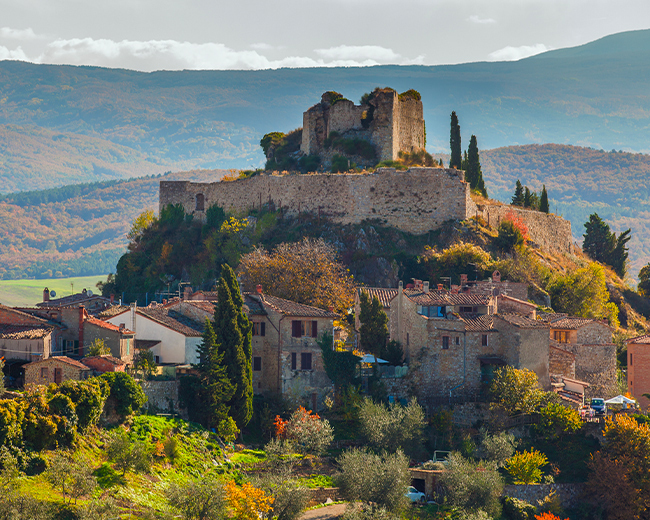
Montalcino: another of Val D’Orcia’s pearls.
Val D’Orcia’s must-see sites include the town of Montalcino, home to Brunello wine and a place of great charm. Make sure you don’t miss the fortress dominating the old town. Every year, Montalcino holds its famous Jazz and Wine Festival. First run in 1998, it combines the two great passions of jazz music and fine wine. Every year, the Festival brings top Italian and international musicians to the Montalcino area.
Places to visit include the Palazzo dei Priori, the town hall built in typical Siena style, surrounded by a characteristic portico. Built in 1100, the 4 km-long town walls are well worth a visit, retracing the steps guards took along the walkway and finding out about this charming town’s history.

San Quirico and the Chapel of the Madonna di Vitaleta.
Why not visit San Quirico and take the opportunity to hike to the Chapel of Our Lady of Vitaleta? Framed between parallel rows of cypress trees, although tiny and almost invisible among the Val d’Orcia’s fields, this small chapel has become a star attraction in one of the world’s most famous landscapes. For many years, people came here to worship a simulacrum of the Virgin of the Consolation, until in 1553 a famous statue of the Virgin by Andrea della Robbia arrived. Today housed in the Church of Our Lady of Vitaleta in the centre of San Quirico d’Orcia, the statue has an interesting story: it is said that the Virgin appeared to a shepherdess, suggesting that a shop in Florence was where the local faithful had to go to find the statue for their church.
It is also well worth visiting the charming village of San Quirico. In the Middle Ages, this town experienced its greatest splendour, earning wealth from passers-by on the road plied by Umbrian merchants en route to Florence, and pilgrims passing along the Via Francigena. It’s a great place to “go back in time”.
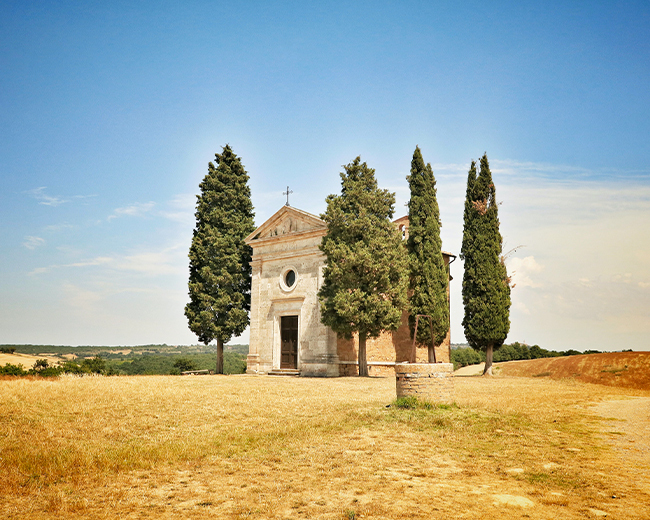
Siena.
At least a stop-off in Siena is a must. We suggest starting in Piazza del Campo, with Palazzo Pubblico and the Torre del Mangia, and then move on to the unique black-and-white architecture of the Duomo and Baptistery.
Seemingly unchanged since the Middle Ages, the city is famous throughout Italy for its Palio, an event that draws thousands each year.
Perhaps the most recognizable thing about the town is the colour of its building facades and roofs, that “Sienna colour” known worldwide that lends the city its harmonious and beautiful unity.
It is also worth visiting the Museo Civico, home to one of the world’s most famous allegories, of Bad and Good Government, and the Pinacoteca picture gallery with specimens of 15th-century Sienese painting from Duccio to the Lorenzetti brothers and Francesco di Giorgio Martini.
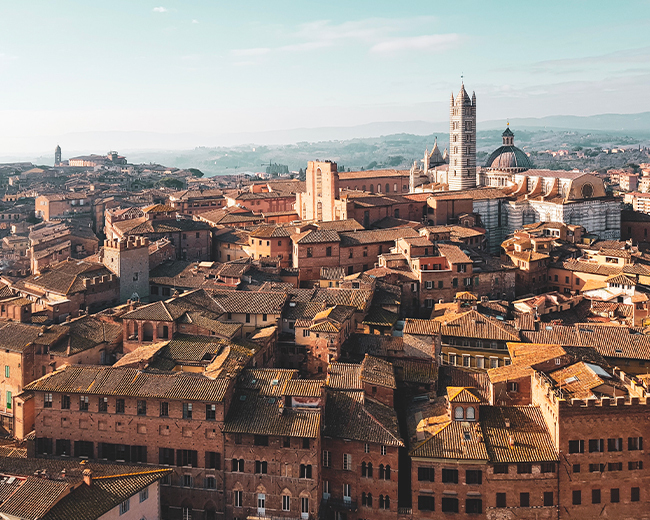
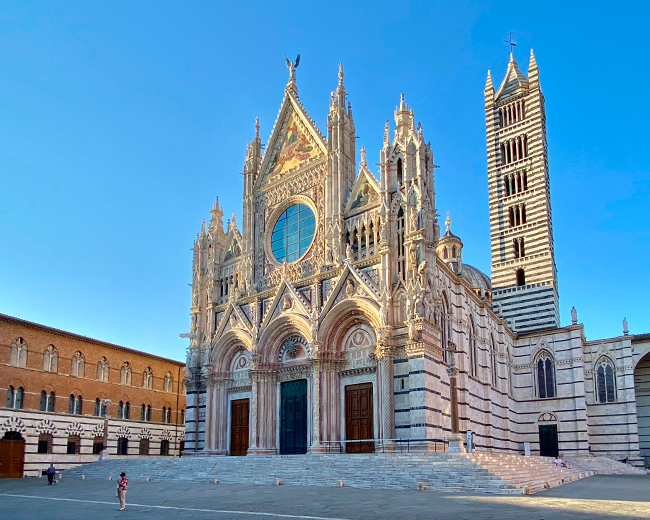
Staying in Montepulciano.
We have already mentioned Montalcino… Now it’s time for Montepulciano, another town in the Val d’Orcia renowned for the local red wine. Perched on a hilltop with stunning views out over the Val d’Orcia and Val di Chiana, Montepulciano is a medieval town with a truly enchanting castle. As with Montalcino, here too we recommend a visit to one of the local winemakers to taste local products and famous Nobile di Montepulciano wine.
To get the most out of your trip to Val d’Orcia, Montepulciano makes for an ideal strategic base to explore the surroundings. Come stay at the Gruppo UNA elegant residence, Relais Villa Grazianella | UNA Esperienze, immersed in the enchanting Siena hills, in a location synonymous with fine Tuscan wine and splendid views of heart-stoppingly-beautiful landscapes.
